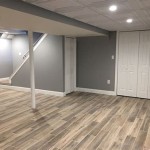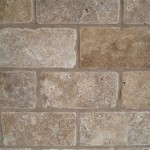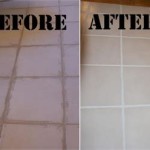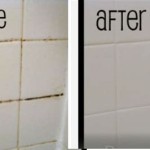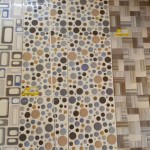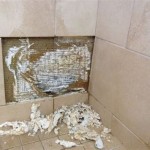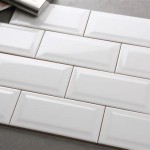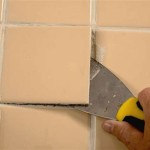Do You Need Backer Board For Wall Tile?
The installation of wall tile necessitates careful preparation and the selection of appropriate materials to ensure longevity and a professional finish. Among the critical components in a tile installation is the substrate, the surface onto which the tile is adhered. One option for a tile substrate is backer board, also frequently referred to as cement board. Determining whether backer board is necessary for a specific wall tile project requires a thorough understanding of its properties, benefits, and the potential drawbacks of alternative substrates.
Backer board is specifically engineered to provide a stable, moisture-resistant surface ideal for tile installation. Unlike standard drywall, which can deteriorate when exposed to moisture, backer board is designed to withstand damp environments like bathrooms and kitchens. This resistance to water is a primary reason why it is often recommended, and sometimes required, in areas prone to elevated humidity or direct water contact. The choice of whether to use backer board is contingent upon several factors, including the location of the tiling project, the type of tile being used, the existing wall structure, and local building codes.
Understanding Backer Board Properties and Benefits
The composition of backer board is key to understanding its suitability for tile installations. It is typically made from cement, reinforced with fiberglass mesh, creating a rigid and durable panel. This construction provides several advantages over other potential substrates.
Firstly, backer board offers exceptional moisture resistance. This characteristic is particularly important in bathrooms, showers, and kitchens, where walls are frequently exposed to water and steam. When water penetrates behind tile installations, it can lead to mold growth, structural damage, and tile delamination. Backer board's resistance to water minimizes these risks, contributing to a longer lifespan for the tile installation.
Secondly, the rigidity and stability of backer board provide a solid base for tiles. This is crucial for preventing movement and cracking, especially with larger or heavier tiles. The firm surface allows the tile adhesive (thin-set mortar) to bond effectively, ensuring a secure and lasting connection between the tile and the wall.
Thirdly, backer board is relatively easy to work with. It can be cut to size using a utility knife and scored, or with a circular saw equipped with a masonry blade. This makes it adaptable to various wall configurations and allows for precise fitting around fixtures and corners. Proper installation, including the use of appropriate fasteners and seam treatments, is essential to maximize its performance.
Finally, backer board offers a degree of fire resistance. While not a primary fireproofing material, its cementitious composition provides some protection against fire spread, potentially improving overall building safety.
Evaluating Alternatives to Backer Board
While backer board is often the preferred substrate for wall tile, alternative options exist, and their suitability depends on the specific project requirements. These alternatives include drywall, green board, and existing tile surfaces.
Standard drywall, also known as gypsum board, is a common wall material in residential construction. However, its paper facing is susceptible to moisture damage, making it unsuitable for areas with high humidity or direct water exposure. Using drywall as a tile substrate in bathrooms or kitchens can lead to swelling, crumbling, and eventual tile failure. Therefore, standard drywall is generally not recommended for wall tile installations in wet areas.
Green board, or moisture-resistant drywall, is designed to offer improved water resistance compared to standard drywall. It features a water-resistant paper facing that provides some protection against moisture penetration. While green board is sometimes used as a tile substrate in less demanding environments, it is not as reliably waterproof as backer board. In areas with frequent water exposure, such as shower walls, backer board remains the superior choice.
Installing tile over existing tile is another possibility, provided the existing tile surface is in good condition. The existing tile must be securely bonded to the wall and free from cracks or loose pieces. The surface should be thoroughly cleaned and roughened to promote adhesion of the new tile. A bonding agent may also be necessary. While tiling over existing tile can save time and labor, it is crucial to assess the structural integrity of the existing installation and ensure compatibility with the new tile and adhesive.
Finally, some manufacturers offer specific types of water-resistant gypsum boards that are designed to be suitable substrates to tile. These boards are often used in conjunction with waterproofing membranes to provide adequate protection against moisture. Consulting with the manufacturer's recommendations and local building codes is important before using these products.
Key Factors in Deciding Whether To Use Backer Board
Several key factors influence the decision of whether to use backer board for a wall tile project. These considerations include the location of the installation, the type of tile, local building codes, and the existing wall structure.
The location of the tile installation is a primary determinant. In areas with high humidity or direct water exposure, such as shower walls, tub surrounds, and kitchen backsplashes, backer board is strongly recommended. Its moisture resistance provides a crucial layer of protection against water damage, extending the lifespan of the tile installation. In drier areas, such as powder rooms or entryways, the choice may be less critical, and alternatives like green board might be considered. However, even in these locations, backer board offers a higher level of protection and is generally considered a best practice.
The type of tile being used also influences the substrate choice. Large format tiles, heavy stone tiles, and mosaics require a stable and rigid substrate to prevent cracking and ensure proper adhesion. Backer board's strength and stability make it well-suited for supporting these types of tiles. Smaller, lighter tiles may be less demanding, but a solid substrate is still essential for a lasting installation.
Local building codes and manufacturer recommendations often specify the required substrate for tile installations. These regulations are designed to ensure safety and durability, and compliance is essential. Before starting a tile project, it is important to consult local building codes and manufacturer guidelines to determine the appropriate substrate for the specific application. These resources provide valuable information on material selection, installation techniques, and waterproofing requirements.
The existing wall structure also plays a role. If the existing wall is uneven, damaged, or structurally unsound, it may need to be repaired or replaced before tiling. Backer board can be used to create a level and stable surface, providing a suitable base for the tile installation. In some cases, furring strips may be necessary to create a plumb and level framework for the backer board.
Finally, the cost of materials and labor may also be a consideration. Backer board is generally more expensive than drywall, and its installation may require more time and skill. However, the long-term benefits of using backer board, such as increased durability and reduced risk of water damage, can outweigh the initial cost. Choosing the appropriate substrate is an investment in the longevity and quality of the tile installation.
Proper installation of backer board is crucial for its performance. This includes using the correct fasteners (screws designed for cement board), taping and mudding the seams with alkali-resistant mesh tape and modified thin-set mortar, and ensuring that the boards are securely attached to the wall studs. Gaps or voids behind the backer board can compromise its stability and lead to cracking. Waterproofing membranes may also be applied over the backer board, particularly in shower installations, to provide an additional layer of protection against water penetration.
In conclusion, while alternatives to backer board exist for wall tile installations, its superior moisture resistance, stability, and strength make it the preferred choice in many situations, especially in wet environments. Careful consideration of the project's specific requirements, local building codes, and manufacturer recommendations is essential in determining the appropriate substrate for a lasting and successful tile installation. The factors outlined above will help inform the decision-making process and ensure that the chosen substrate provides the necessary support and protection for the tile.

Tile Backerboard Material Options Fine Homebuilding

How To Install Cement Board For Tile Projects Diy Family Handyman

Tile Backer Board Benefits Uses Insulation

What Lies Beneath Tsj

Tile Backer Board Breakdown Which One Is Best For Showers Diytileguy

Benefits Of Tile Backer Boards In A Wetroom Ccl Wetrooms

Tile Backer Board Installation Key Steps For A Quality Armchair Builder Blog Build Renovate Repair Your Own Home Save Money As An Owner

Tile Installation Backer Board Around A Bathtub Family Handyman

What You Need To Know About Tile Board Canadian Home Style

Drywall To Backerboard Transition In Tiled Showers The Floor Elf
Related Posts

